Sooooo-ee!!! Calling All Pellet Pigs: What You Should Know About Feeding Trout
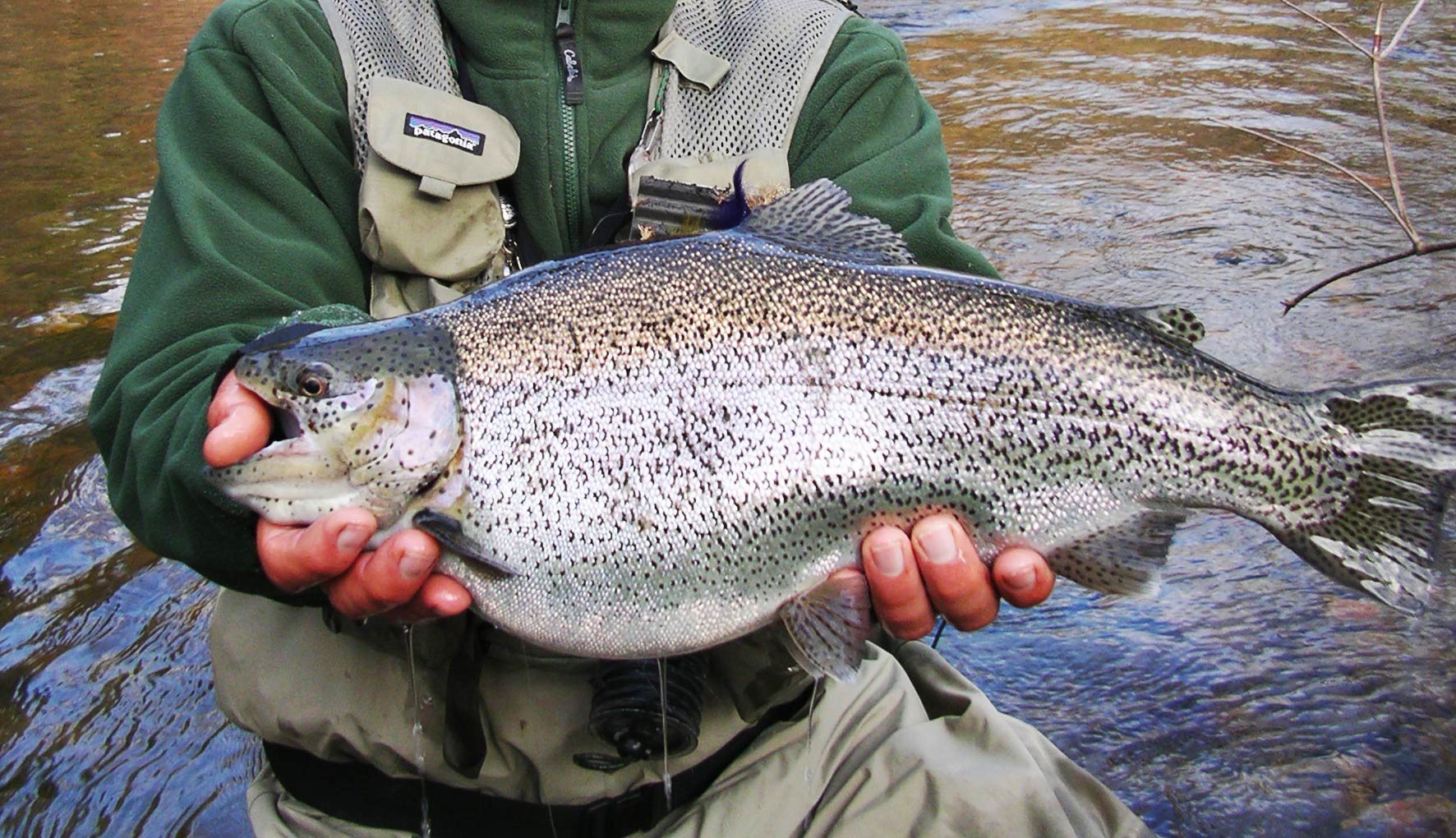
THE OTHER DAY ONE OF OUR READERS WAS OFFENDED WHEN I USED THE TERM “PELLET PIG”. I ENJOY OFFENDING PEOPLE, SO I DECIDED TO WRITE AN ENTIRE POST ON THE SUBJECT.
I honestly didn’t know we weren’t supposed to talk about this. Pellet pigs are a fact of life. They exist and people catch them. They are not offended that we call them pigs, because they don’t speak English. They can be a TON of fun. (get it) They can turn a marginal stream into a hog farm and they can seriously fuck things up.
Feeding fish on private water is a very common practice. I am not going to tell you that it’s ‘bullshit’ or it ‘doesn’t count’ or that it makes you a ‘pud whacker.’ I did it myself for a season and I have good friends who still do. I’ve had some great times catching pellet pigs and sharing the experience with friends. Through personal experience, I’ve learned the positives and the negatives.
Feeding fish, on private water, is a great way to insure that they hang around. Feeding will also attract wild fish from other parts of the stream to hold in your water. It’s a sure fire way to insure that you will always have good fishing, regardless of the quality of your water. It makes fish grow fast and generally means big fish will be present in unnaturally high numbers. This all sounds pretty good, right? Well, nothing in life is without cost and pellet pigs are no exception.
I’m not saying it’s always a bad idea to feed fish. You can do it right and you can do it wrong. What I am saying is,
IF YOU DECIDED TO FEED FISH, HERE ARE SOME THINGS YOU OUGHT TO KNOW.
1)Your trout is so fat it showed up at the Macy’s parade wearing ropes!
2) Feeding fish takes natural selection off the table. This can negatively impact the entire ecosystem of a stream. It discourages predation and supplements trout which would otherwise end up food themselves. If the trout in question is capable of reproduction, they pass on inferior genetics. Feeding also encourages fish to to crowd into holding water in unnatural numbers, increasing the spread of disease. These hordes of fish put unnatural pressure on forage food and can virtually wipe out localized forage species like insects and crawfish, leaving the fish increasingly dependent on feeding.
3) Your trout is so fat it can’t hold in a run, it has to hold in a waddle!
4) Pigs get fat, hogs get slaughtered. Feeding fish in one section of a stream can negatively impact the overall population. Causing fish to congregate puts them at risk on many levels. In addition to spreading disease, large pods of fish attract predators like otters, herons and bait fishermen. When a large pod is wiped out, the fish which are lost might have populated several miles of stream. Spread out, they would have survived.
5) Your trout is so fat
Read More »Use Long Leaders for Flat Water
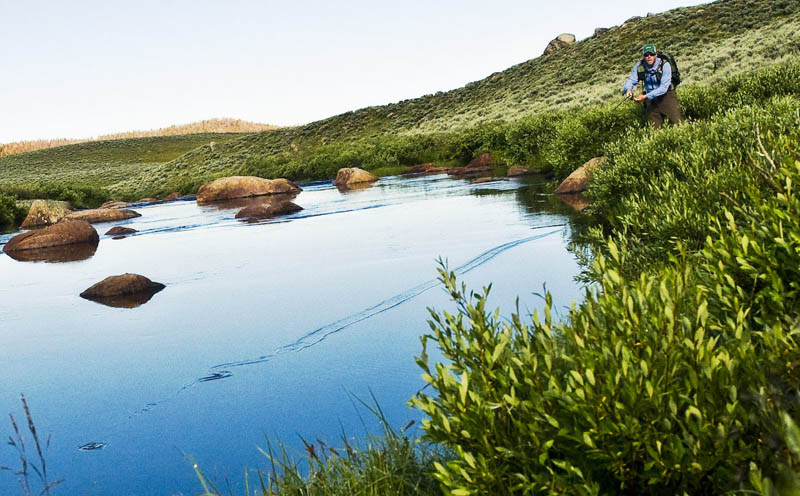
In the picture above, take a moment to view the disturbances the fly line and leader create on the water during a presentation.
The saying a picture tells a thousand words is true, particularly in this case, as a tool for me explaining how important it is to use a long leader when fly fishing on flat water.
Notice how little noise and footprint the leader makes when compared to the fly line. I was casting a Scott G2 5 weight rod with a 9′ leader and foam hopper, and I presented the fly as softly as possible. Anglers often don’t realize how much noise they’re creating during their presentations, and why so regularly they’re spooking the fish their casting to on flat water.
The fly line itself, creates the most noise during your presentation and is by far the biggest contributor to spooking fish. Try using a 10-12′ leader or even a specialty George Harvey dry fly leader, that’s designed to dissipate energy and lay out dry flies with slack. This will increase the distance between your fly and the start of your noisy fly line hitting the water, resulting in more hook ups and less spooks.
Read More »Understanding Fly Line Tapers and Diagrams

Buying a fly line doesn’t have to be a leap of faith.
For many anglers, fly lines and their characteristics are a huge mystery. They know that different fly lines cast differently and that some suit their needs or casting styles better than others but they have no idea why. What’s worse, when it’s time to buy a new line they aren’t able to make an informed choice. They just go to the fly shop and ask for the best line. Thank God for knowledgable fly shop guys, but do you really want to rely on someone else’s guess at what you will like?
If this sounds like you, I have good news. There is an easy way to get a sense of how a fly line will cast before you ever take it out of the package, and with a little experience you can quickly choose the line that’s right for the way you fish.
Fly lines have become really complicated in the last five years or so. Specialty lines have multiplied like rabbits and line companies have created lines to match every species, water condition and casting style. If you’re confused, you’re not alone. Fortunately, almost every manufacturer publishes line diagrams which show you, in detail, the taper of each line. If you know how to read the diagram, you’ll know how the line will cast.
BASICS
There are three basic types of line tapers. Weight forward, double taper and triangle taper. Looking at the diagram, it’s pretty clear how they get their names. The double taper line is a very traditional style of line which has a long level belly and a symmetrical taper on each end. Weight forward lines shift the weight to the front of the line and were developed to match modern fast action carbon fiber rods. Triangle tapers are a kind of hybrid of the two.
Think of the diagram as a picture of the fly line in profile with the thickness of the line exaggerated. The thickness of the line indicates two things. Where the weight is and the relative stiffness of the line. Where the line is thicker, it will be heavier. Different line materials have different stiffness, but within a given fly line, the line will be stiffer where it is thicker. Knowing where the weight is in the line will tell you how it loads the rod and the stiffness, as well as the weight, will tell you how it presents the fly.
ANATOMY OF A FLY LINE
To understand the information the diagram gives you, first you have to understand the different parts of the fly line and how they affect the line’s performance. Most modern fly lines have five parts. From front to back they are the tip, front taper, belly, rear taper and running line. Each one performs a specific function and its weight and length determine how the line casts.
THE TIP
The tip is the final word in fly presentation. The longer and lighter the tip, the more delicate the presentation. A long light tip will work to your advantage when
Read More »Shrimp Part 2: Cannula Shrimp
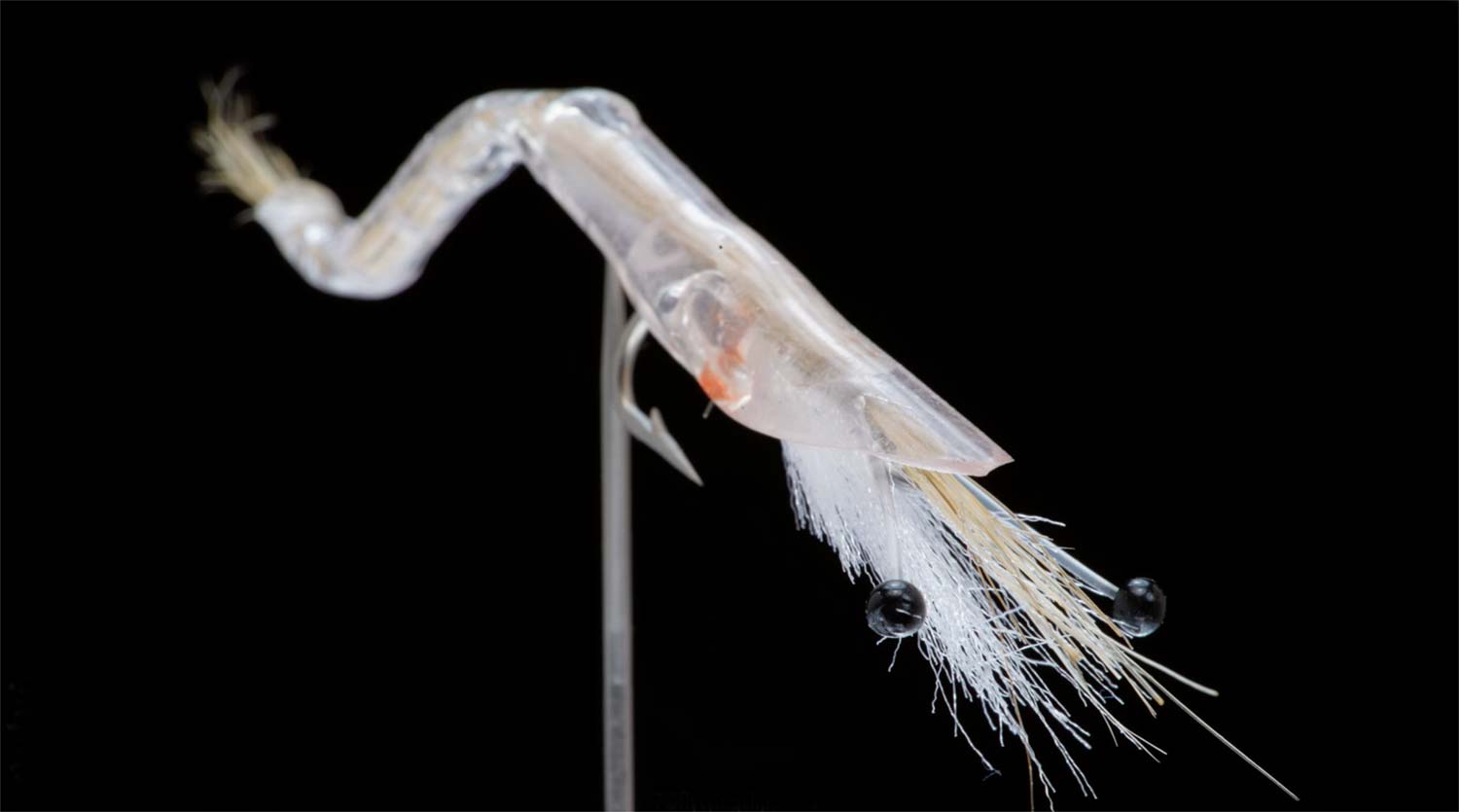
By Herman deGala This fly came about because I was changing out my cannula for my oxygen when I noticed that it looked like a shrimp. At the time I was also working out a grass shrimp pattern that a friend had asked me to take a look at for those double digit o’io(bonefish) from my home in Hawai’i. I adapted my technique for crimping the abdomen with a heated pair of hemostats from my mysis shrimp and just increase its scale. You can purchase cannulas off of the web get them from a friend who is on oxygen. As for me I’ll have a lifetime supply. Watch the video and learn to tie deGala’s Cannula Shrimp. Mahalo, Herman deGala Signature Fly Designer for Umpqua Feather Merchants. / http://flytyingclips.com Gink & Gasoline www.ginkandgasoline.com hookups@ginkandgasoline.com Sign Up For Our Weekly Newsletter!
Read More »Peacock Bass In The Amazon, Part 2
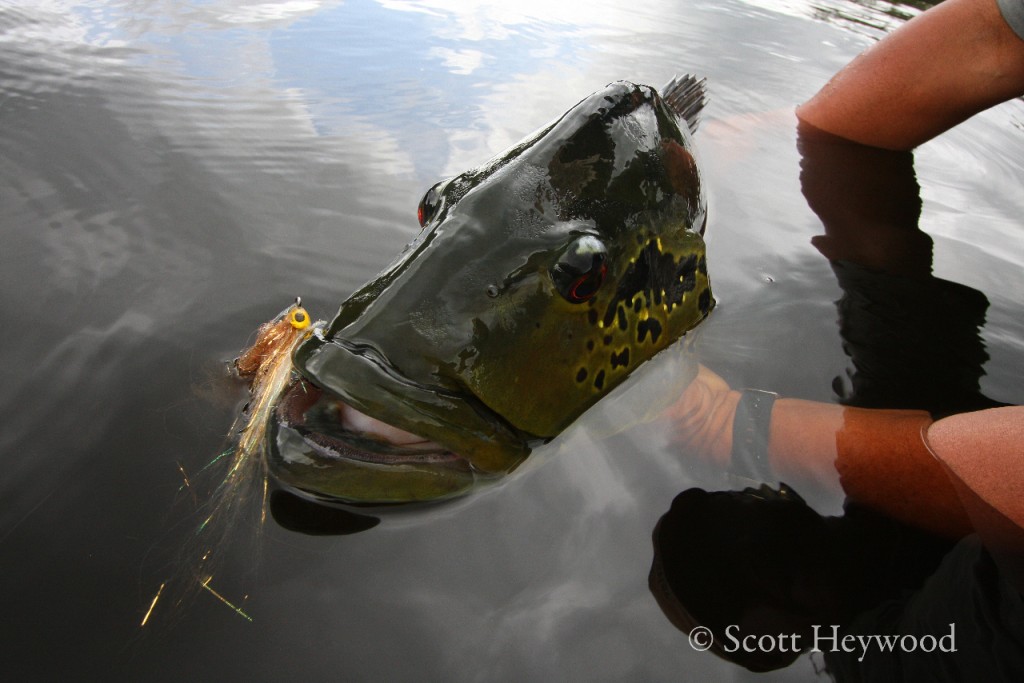
Packing for Success in the Amazon
If you haven’t read part 1, you can find it here.
Preparing and packing the right gear prior to your departure to the Amazon is crucial for your overall trip enjoyment and fishing success. Following these gear recommendations, fishing tips, and general amazon facts, will ensure that you’ll be ready to tackle the monster peacock bass you’ll encounter as well as the hot tropical climate.
One important factor that rookie amazon anglers often fail to realize is water levels on the rivers and tributaries of the Amazon River can make or break your trip. Sometimes conditions will be perfect a week or two before your departure, and a couple days before your scheduled to leave, you’ll receive an updated water level report informing you that conditions have deteriorated. It’s just part of the game. It comes with fishing a river that provides us with 1/5 the worlds freshwater supply.
Talk to any veteran peacock bass angler and they’ll quickly tell you how big a role water levels play in the fishing and how helpless you are at controlling them. Despite there being both wet and dry fishing seasons in the Amazon, sometimes the seasons end up being the opposite of what they should be for the time of the year. Your best bet for coping with this uncertainty is booking your trip with the right Amazon outfitter or lodge. The, fly fishing only, Agua Boa Lodge, located in Brazil, is best suited for coping with both high and low water levels because of its specialized equipment, exclusive location, and the diversified fishing operations.
Water Levels are Important in the Amazon
If water levels are too high, peacock bass often will move back into the flooded jungle shorelines making them difficult to coax out or present a fly to. On the flip side of the coin, if water levels are too low, your guides might not be able to access certain watersheds, or even worse,
A Conversation With April Vokey
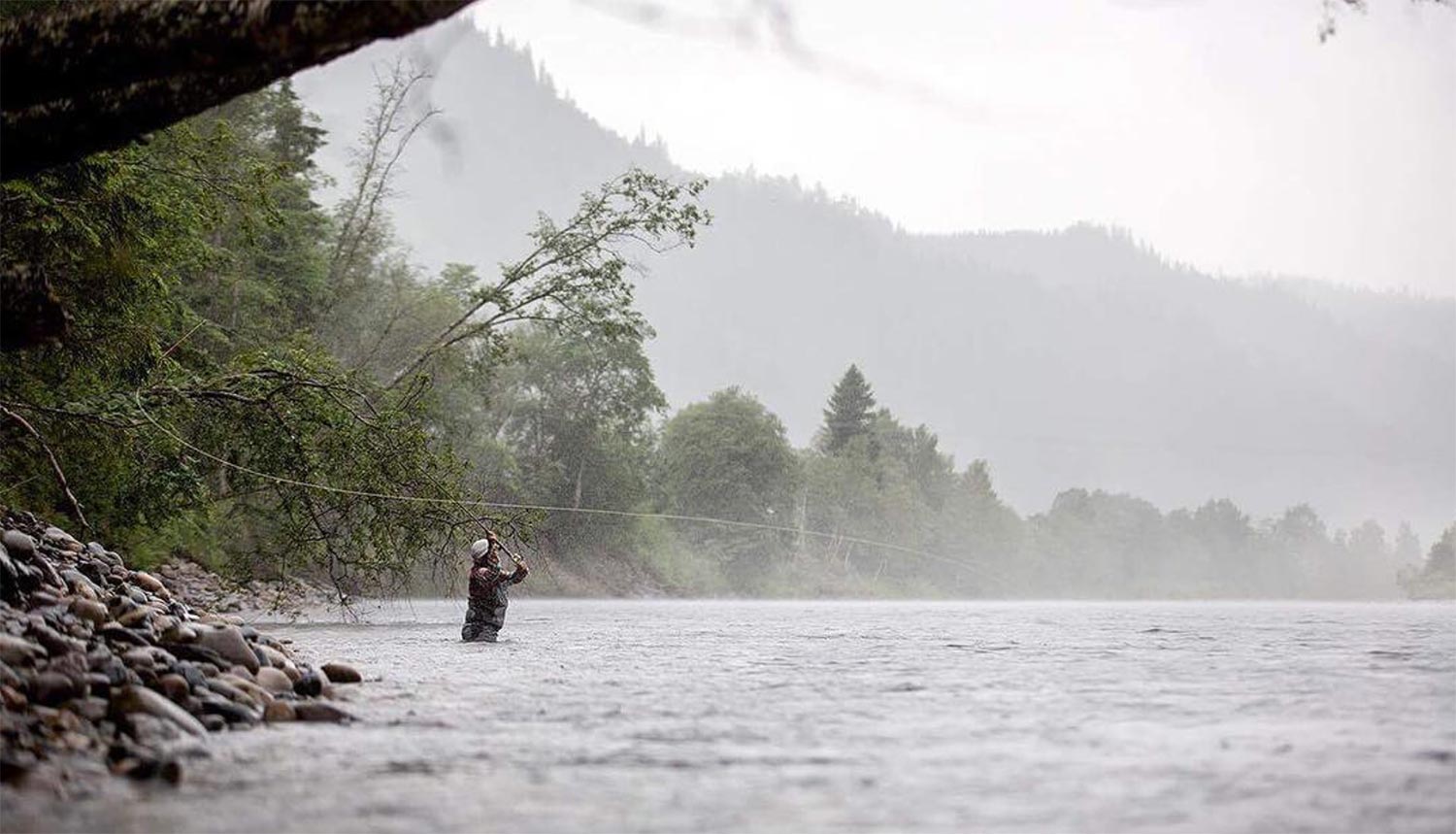
April Vokey is one of the most recognized, and sometimes controversial figures in fly-fishing.
Few anglers have been thrust into the limelight in quite the same way as April Vokey. April is the first to admit that she asked for it, but it hasn’t always been an easy ride. She has enjoyed, and often endured, a weird kind of celebrity which may only exist in fly fishing.
She has been a writer, a teacher, a blogger, a social media sensation, a TV personality, an entrepreneur, a passionate conservationist, an advocate for at-risk kids and, above all, an obsessed angler. She is a walking contradiction in many ways and whatever you think you know about her, there is more to the story.
I met April, by chance, on a gravel bar on the Dean River in British Colombia. She would agree with me that that first meeting was odd, and neither of us would have guessed it was the beginning of a friendship, but it was. I was flattered, and a little nervous, when April asked me to record an episode of her “Anchored” podcast. (If you’re not a listener, you should be.) We agreed then that she would return the favor and sit down with me for an in depth interview for the G&G audience.
While April was in town helping with a fundraiser for our local Chattahoochee river, we recorded this interview. Four and a half months pregnant, she is clearly embracing the moment as a turning point and chose to share a lot of personal experiences which she has not discussed publicly in the past. It was an engaged, frank and enlightening conversation.
I HOPE YOU ENJOY GETTING TO KNOW APRIL VOKEY AS MUCH AS I HAVE.
Read More »Don’t Underestimate The Little Guys
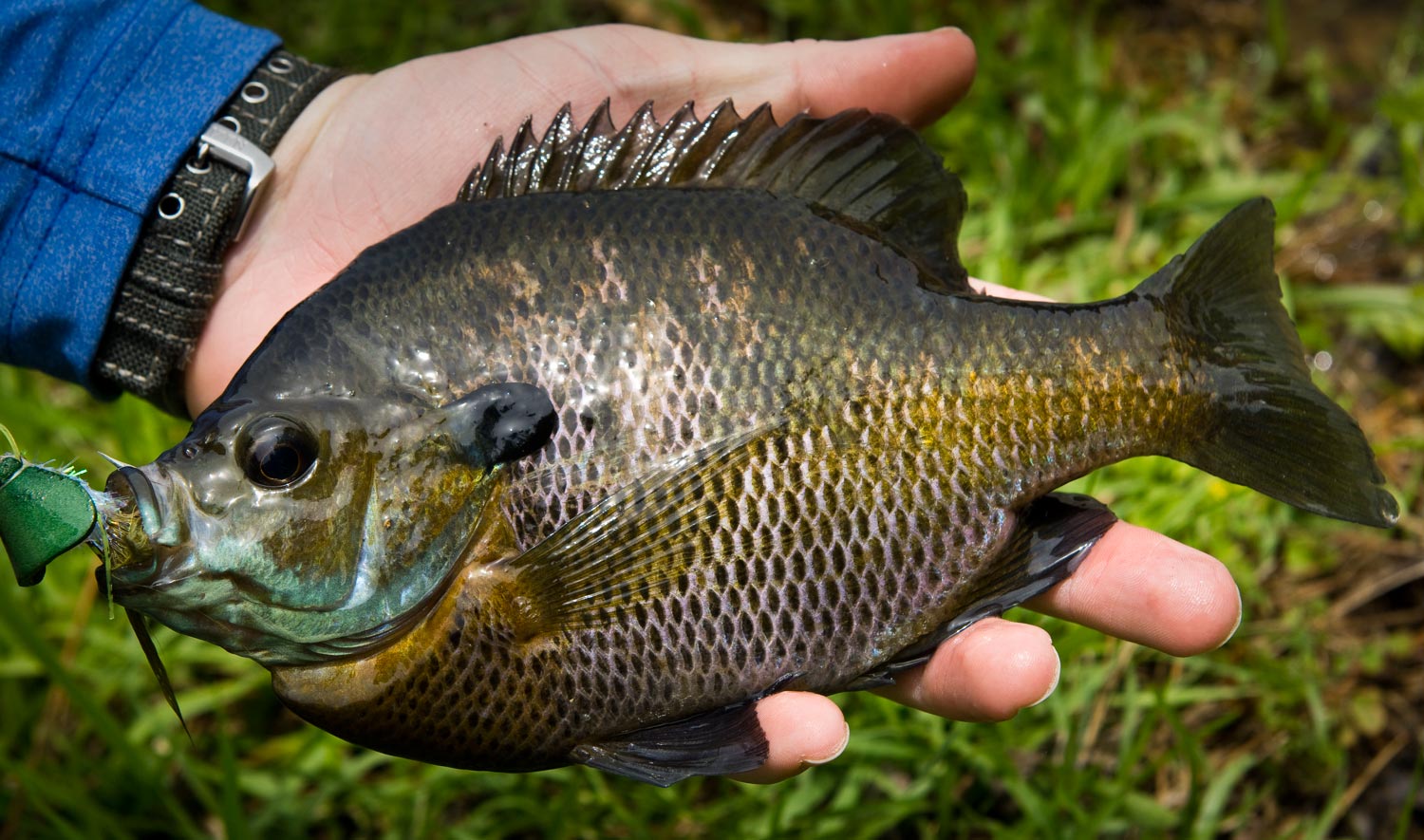
It’s bluegill time again.
Warmer temps, blooming flowers, and the buzzing sound of lawn mowers. Crazy, diehard bass anglers are trailering their $30,000 boats with their $50,000 trucks, and running 70mph across every lake in the country in order to chase after their favorite little green fish. Hell, the amount of money a bass angler may spend on gasoline this summer could probably fund a bachelor’s degree. As fishermen, we do some crazy things. Well worth it in my opinion, however, today I am standing on the bank of a local pond, three weight in hand, casting little poppers and #8 RLD’s.
This time of year is the height of the bluegill spawning season, and the best time to target the larger bluegill.
That first full moon of May is typically when most bluegill anglers mark their calendars, though you can find them on the bed as early as March and April, and as late as June. These little guys are crazy aggressive and will sometimes make you think a 5lb bass has struck when they take your fly. They’re one of my favorite species of fish to catch on the fly. Their bright colors and never-give-up attitude makes them a treat for anglers looking for some fun. I swear if these things grew to ten or fifteen pounds, they’d be the largemouth bass of the world. If only they jumped.
Much of my childhood was spent on the banks of Lake Sinclair near Milledgeville, Ga. I would spend many of my summer weekends running around in my little jon boat, chucking little Bettes poppers along the banks and submerged timber. It was where I really learned how to cast a fly rod, and where I fell in love with fly fishing. On most days, there were always bluegill willing to strike at my fly, providing the positive feedback to keep me going no matter how frustrated I may have been with my casting abilities. These little guys are certainly one of the main reasons why I kept picking up my fly rod.
The learning curve in fly fishing is sharp for most. Put a beginner on
Read More »Prolong the Life of Your Leaders with Tippet Rings
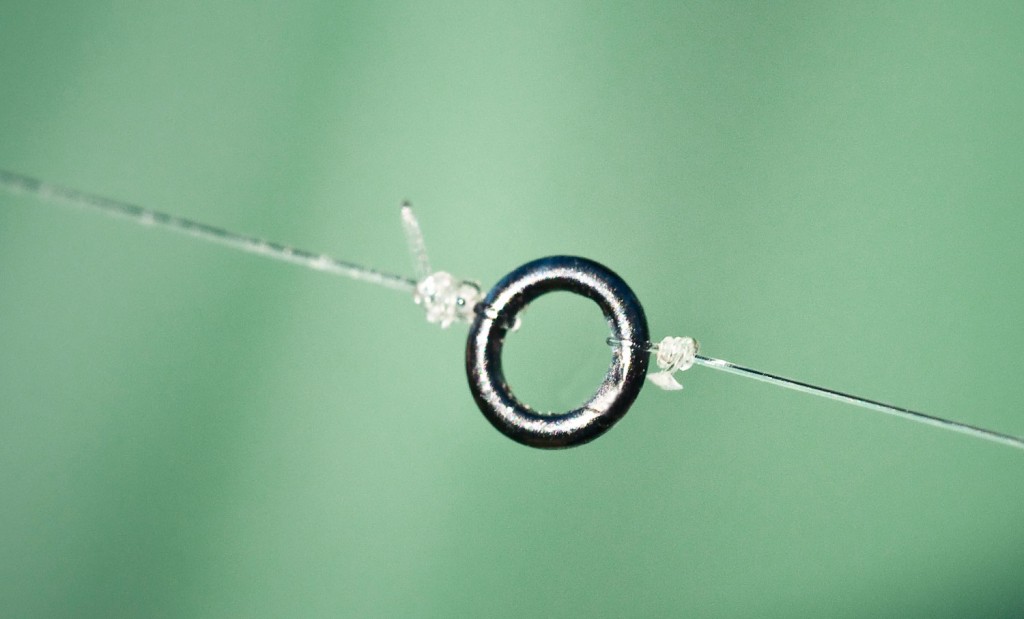
Leaders have got quite expensive over the past couple decades.
Recently, I saw a pack of two fluorocarbon leaders retail for $20.00 in a fly shop. That’s a pretty good hit to the wallet if you get out on the water to fly fish regularly. One way you can prolong the life of your leaders is to use tippet rings. The tippet ring takes the leader out of the equation by providing the angler a reusable anchor point to tie on tippet and attach flies. Climax manufactures and sells tippet rings and although I don’t like using them for my dry fly fishing because they can create micro-drag, they work very well for nymph fishing.
Tippet Ring Rigging Instructions
What I like to do is take a 7 1/2′ tapered 2X or 3X leader and tie the end directly to the loop ring. I then tie 24-30″ of 4X-6x tippet to the other side of the loop rig and tie on my tandem nymph rig. This keeps me from having to cut into my leader when I’m changing out flies or if I break off on a snag fishing. The tippet rings are also very nice for anglers that struggle with their eye sight up close, and makes it very easy
deGala’s CDC Callibaetis
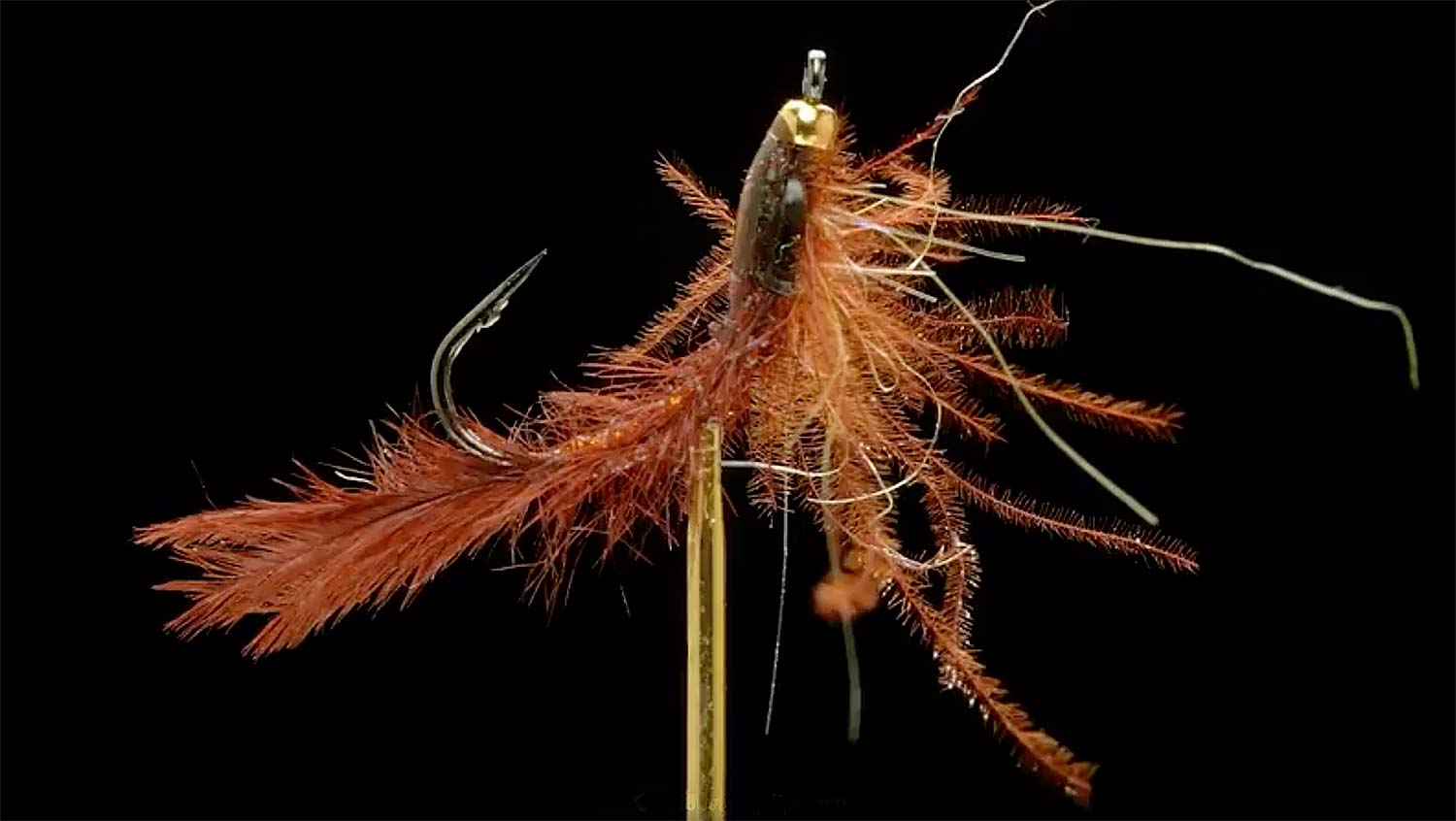
By Herman deGala
A new twist on a classic trout pattern.
In escrima, Filipino Martial Arts, we have what is called a “Colonial Mentality”. For years escrima languished in obscurity in the Philippines while martial arts from other countries grew and became very popular. It hasn’t been until the last 15 years that escrima has come in to the limelight and become cool again.
Like everyone, I love seeing the new flies as they come out. The innovative use of materials and technique has been amazing. With better access to quality materials and the proliferation of technique videos on the web, there’s no telling where this can go.
But the old stuff still works and works well. Below is a video of my most productive fly for callibaetis. I’ve updated the hook and changed the bead to tungsten, but it is still that same old pattern. In rust, it mimics the larval instar stage of the callibaetis and the point at which it is most vulnerable in its development. Fished on a stillwater line and stripped in six inch bursts toward shore, it’s a morsel of food the trout can’t ignore.
Take a look into the corners of your boxes and pull out that fly that netted you over 60 fish in one day. Sure, tie it on one of those sexy jig hooks. Add one of those tungsten beads with the distressed paint job. You’ll find what was once old has become new again.
WATCH THE VIDEO AND LEARN TO TIE DEGALA’S CDC CALLIBAETIS
Read More »Garner’s White Trash Bass Fly
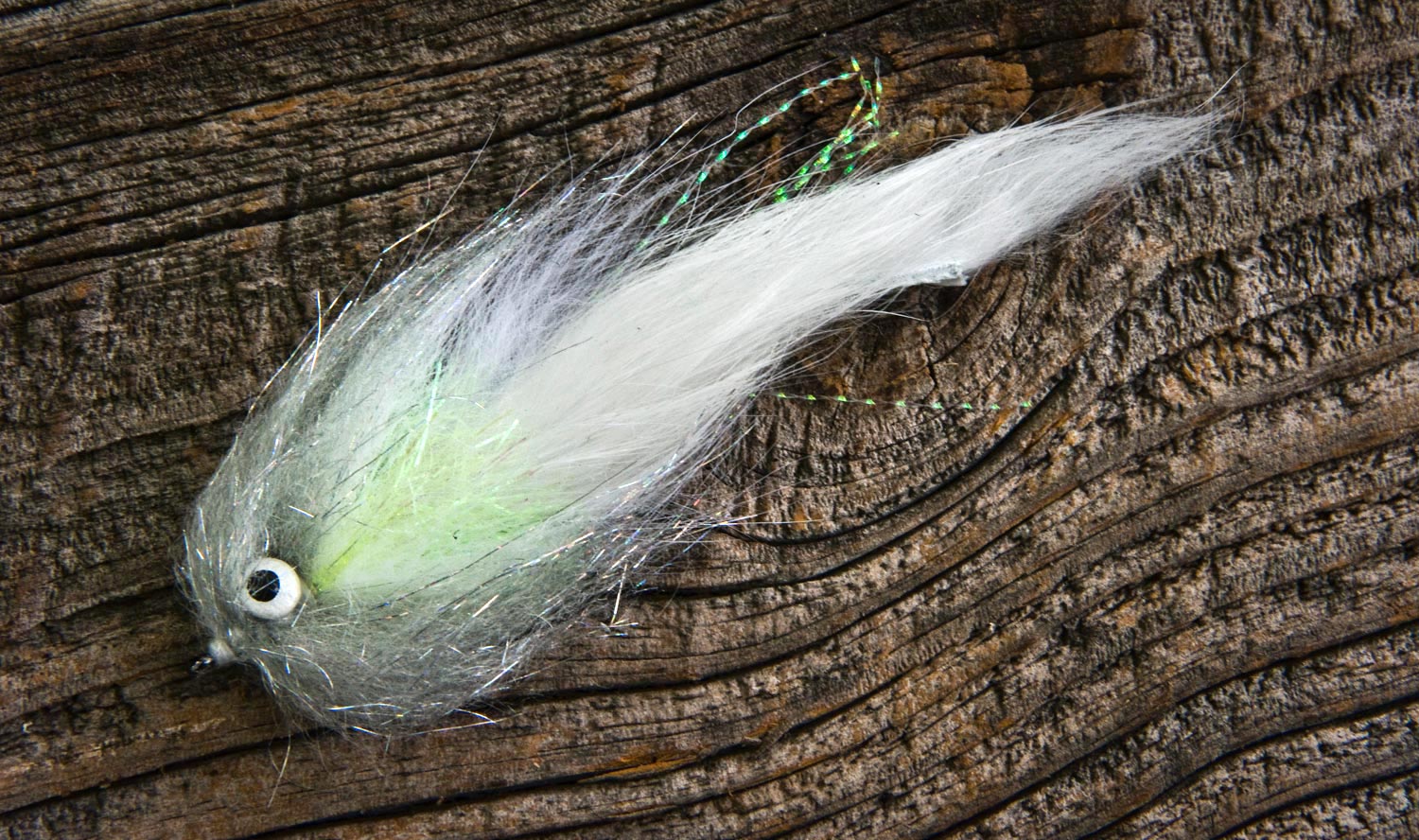
WANT TO CATCH BIG BASS?
How about really big bass? Striper fishing rivers in the south during the summer can be off the hook but it can also be challenging. Those big bruisers can get pretty damned selective and you a pattern that will get them moving.
Nobody knows this game better than Garner Reed. Today Garner is going to share a pattern he developed for catching big striped bass and spotted bass on the Etowah River. He calls it Garners White Trash and it gets the job done.
Watch the video and learn to tie this great bass fly.
Read More »